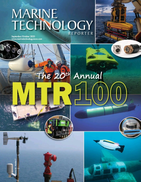Subsea Vehicles: To Be (resident), or Not to Be?
That’s the question? Or, more specifically, are there alternative ways of delivering robotics to where they’re needed without having to have seabed docking stations? Elaine Maslin takes a look.
The idea for some kind of resident subsea vehicle has been around for some time. From BP’s considerations in 1986 for an integrated ROV launch system onboard the SWOPS oil production system to support subsea activities through to a Schlumberger patent filed in 2000 for a seafloor station to house an underwater vehicle to service at least one subsea well.
The idea is now closer to reality than ever, with seabed docking demonstrations now done with various vehicles. The first commercial resident drone is also creeping closer to finally going on contract; mid-June, Saipem’s Hydrone-R was said to be mobilising to Equinor’s Njord field in Norway, having proven 4-5 months continuous residency, in tests.
The benefits of resident systems are around reduced reliance on crewed vessels for deployment (lowering risk to humans and GHG emissions), de-linking deployment from being reliant on decent weather, reducing the risks associated with launch and recovery through the splash zone and offering greater time on task.
But will all fields justify resident systems and are there alternative ways to deliver subsea robotics? “We think the subsea docking station is a good idea, but the applicability will be very limited to some offshore fields that are large and concentrated enough to keep that drone busy,” says Norwegian subsea service provider uSEA’s Felipe Lima. “In most fields the drone will be idle most of the time,” so why not allow that vehicle to be more mobile and work on other fields using uncrewed surface vessels (USVs)? he says. Helge Sverre Eide, business development manager at underwater interface firm Blue Logic, which is working with uSEA on a mid-water towed docking system, agrees; you need to increase the scope the drones do to make the resident business case work.
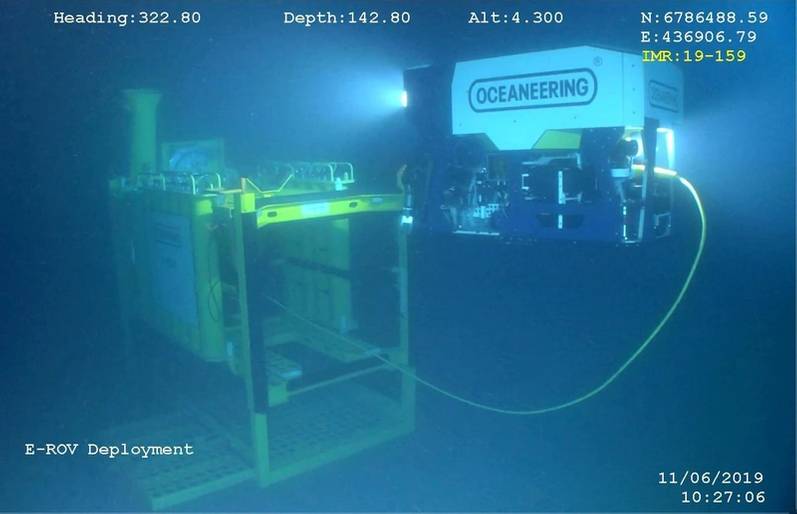 Oceaneering’s Liberty E-ROV system. Photo from Oceaneering.
Oceaneering’s Liberty E-ROV system. Photo from Oceaneering.
Lee Wilson at UK start-up HonuWorx, which has an idea for a subsea shuttle/deployment system, says, “We think there are very few deployment cases where the economics will stack up for permanent residency. But we share the aim of replacing conventional vessels. And we want to get rid of complex offshore lifting operations.”
Another challenge is that if a resident drone can’t do one out of 10 tasks and a crewed vessel still has to come out without knowing when, it kills the business case, Steffan Lindsø, Subsea Robotics Product Manager at Oceaneering, says. “That’s the big challenge. Most fields have a biennial inspection and doesn’t require an ROV there at all times.” Oceaneering has been developing the Freedom hybrid AUV – an AUV with light intervention capabilities – that could serve as a resident system, but is initially targeting pipeline survey. However, it also has the Liberty E-ROV, a standalone system comprising an electric ROV with deployment cage, batteries and surface communications buoy, so it can be dropped off and left in field for weeks or months at a time without vessel support, offering temporary residency.
“There’s not one solution that fits everything,” says Graeme Jaques, Sales Manager at UK-based Modus, which has developed and has been using a number of different ways to deploy its hybrid AUVs (HAUVs), based on Sabertooth AUVs, at the surface, mid-water and the seabed, and recently agreed to acquire two of Kawasaki Heavy Industry’s SPICE AUVs. “Some fields or wind farms will lend themselves better to resident vehicles tied to the infrastructure,” he says. “Some more remote fields will lend themselves better to vehicles deployed from a USV. I think there will be a mixture.”
Modus
Modus has three different deployment methods, all focused on using low logistics vessels, says Jaques, using a flexible vehicle that can operate like an AUV or ROV and carry a manipulator skid. At one end is its single point lift launch and recovery system (LARs), which can be deployed off a small low freeboard vessel (in low sea states), with a simple over boarding system such as a small crane with remote release, and a smart grabber for recovery. This has been used for inter-array cable depth of burial surveys and cable surveys in Europe.
It then has a “floating dock”, where the vehicle is launched in a cradle over the side, using a subsea crane. The vehicle drives out of the dock, avoiding a need for heave compensation systems. At the end of a mission, it’s driven back in using a Wi-fi connection to it from the vessel, for recovery. This has been used on pipeline and platform inspections in Australia and wellhead and pipeline surveys in the Mediterranean.
Then there’s a subsea dock, based on a single point lift cassette system with beacons to help the vehicle locate it and drive back in, which can be used mid-water or on the seabed. “This lends itself to simultaneous operations,” says Jaques, where the vessel can go off and do other work, although position drift then becomes a consideration, when the surface position aid is removed, unless there’s an as-built plan of the subsea infrastructure the vehicle can use as guidance or a sparse LBL array. “If it’s a deepwater survey, it can be used as an elevator, reducing battery consumption,” adds Jacques. This has been used in inter-array cable depth of burial in Europe and cable surveys in Europe.
The seabed system could also be deployed with batteries on the cassette and be enabled with communications via a surface buoy or be connected to existing infrastructure for power and communications, Jacques says.
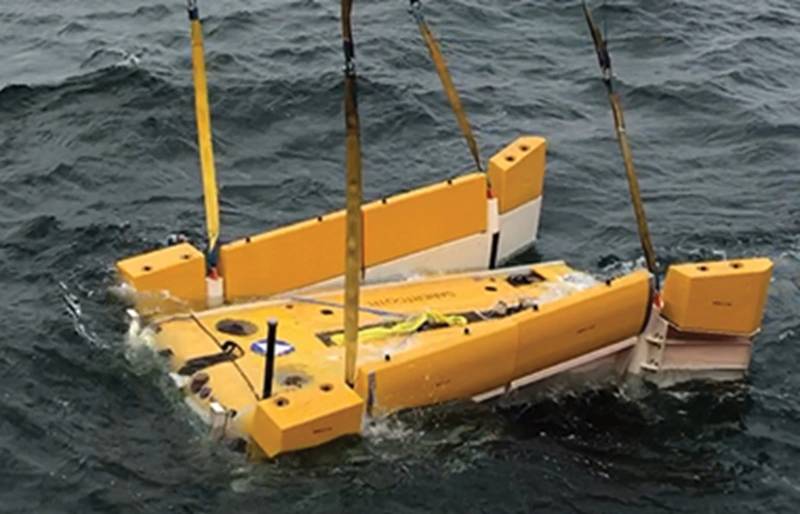 Modus’ floating dock. Photo from Modus.
Modus’ floating dock. Photo from Modus.
Getting SPICEy
By the end of this year, Modus is due to become the first proud owner of the first of two SPICE (Subsea Precise Inspector with Close Eyes) AUVs, developed by Kawasaki (and currently called HAUV-3 by Modus). This will come with a “smart dock”, which includes power and communications, says Jaques, eliminating the need to bring the AUV back on deck for charging and data download and reducing HSE risk.
The HAUV-3’s docking configuration is on top of the vehicle and will provide in-water charging and communications (using Japanese systems based on inductive power and underwater optical communications), as well as enabling the vehicle to be lifted out of the water. The next step is making it seabed resident and/or able to be deployed from shore via an underwater tractor to get it deep enough for launch, making it “a very flexible AUV deployment system,” says Jaques.
Saab Seaeye
Modus’ seabed garage is built around a garage built by vehicle manufacturer Saab Seaeye. This is based on a standard ROV garage accept it has two transponders at its entrance to guide the vehicle in. “Right now, this acts as a safe haven for the vehicle on the seafloor, but you could put charging on it,” says Saab Seaeye chief engineer Jan Siesjö.
Saab Seaeye also has a mid-water docking system, which is a type of cassette but merged with an ROV style top hat tether management system (TMS). The Sabertooth can be flown out of this on a fibre optic tether for full control, or it could use BlueComm on the garage, or it could go off on autonomous missions, says Siesjö. Docking in the water with the garage could be using BlueComm or 3D SLAM, he says, depending on what an operator wants. “Docking underwater has a lot of advantages, especially when combined with a USV,” he says. “This allows residency in more than one way. If you want to install the vehicle on the seafloor you get into problems with making sure there’s power and communications on the seafloor and that probably gets a bit expensive if you’re just wanting something resident for a week or two. Then, semi-resident probably makes more sense, with the USV hovering out there supporting a mid-water garage.”
Operating ROVs from USVs is also something that’s already out there, being done, he says, via military customers, and is soon to be commercialised by Ocean Infinity using Saab Seaeye’s Leopard. Siesjö says another way to do it is at the surface, again using a USV but with a LARS on the boat – as is already done with AUVs – and a tether protection system to prevent propeller entanglement.
Saipem
As part of its all-electric Hydrone R resident ROV development, Saipem also has a “flying garage” concept (in addition to a seabed garage) and sees USVs as part of the picture. The flying garage is a cassette type structure with ArUco type markers and a funnel entrance for guiding the vehicle in. Matteo Mattioli, life-of-field technical advisor, Hydrone programme manager, Saipem, told the Underwater Technology Conference (UTC) in June that a flying garage could allow Hydrone R – and also the firm’s FlatFish AUV, which uses the same architecture (and is due to be tested in Brazil in deepwater in Q1 2022) to be based from a surface asset with a LARS. This could be an autonomous vessel, which is part of the firm’s vision of the future, and would provide a surface communications link, so the vehicle could be remote controlled, and power. Hydrone R would operate out of these garages either tethered or untethered, using a high bandwidth optical link, while FlatFish would operate untethered, on up to 150km excursions, with a low bandwidth link or no/ limited communications link, he said.
Oceaneering
Oceaneering has also been working on mid-water/suspended docking cage for its Freedom vehicle and it’s also looking at USVs as the surface asset to support that docking. “Launch and recovery subsea is an enabler,” says Lindsø. “It means we can up that weather window significantly.” Instead of having to launch and recover the vehicle to the deck for charging and communications, it can dock 50-60m below the surface, doubling the significant sea state this work can be done in. If deployed via a USV, a subsea vehicle could be brought up to under the hull for transit to another site, while charging, without needing to bring it on deck, with the USV providing a communications gateway to shore.
Oceaneering’s submerged dock concept is also a cassette type arrangement with a slight funnelled entrance and a mechanical locking mechanism. An acoustic beacon and passive markers (e.g. ArUco) would enable the vehicle to locate the entrance, with USBL guidance from the surface vessel.
It’s designed to be simple, so it can be made anywhere, so it’s just the vehicle needs to be shipped, he says. It’s also designed that it can be single point lifted out of the water to the deck, using just a crane wire (anti-torsion).
uLARS
Norway’s uSEA is developing both a mid-water LARS for underwater intervention drones (UiDs, as Equinor called them) and a USV to deploy it and act as a shuttle service to take underwater vehicles between work sites. The 24m-long hybrid diesel-electric USV is being designed to support mid-water docking, charging and communications with UiDs or AUVs using uSEA’s uLARS, but also to be able to lift them up onto deck, via a handling system through a moonpool, so that, up to four could be hosted by one USV. The idea is to extend the range of the UiD and to force multiply and extend AUV missions outside the concentrated areas.
The uLARS is being designed to do the hard work when it comes to docking, to make it easier to integrate different types of vehicle. It is able to manoeuvre to the UiD or AUV, rather than making the underwater vehicle find the dock. This is done by the uLARs being towed, by the USV, at the same depth and heading as the underwater vehicle, and, using a sensor fusion solution, including acoustics, sonars, cameras and optics, and active control in all axes of the uLARS, so it moves to the vehicle to make the docking.
A key part of the uLARS is a mechanical locking system being developed by Blue Logic, a partner in the project and which has also been involved in designing Equinor’s subsea docking station. The locking system, which latches on to the underwater vehicle and pulls it into the handling system of the USV, is based on Blue Logic’s MultiDog ROV quick connector for subsea lifting and pulling operations. In addition, a separate Blue Logic inductive underwater power and GB capacity communications connector would provide a charging interface as part of the uLars towed dock. Having multiple vehicles available this way means that more specialist vehicles – 3D scanning or environmental survey, for example – can be used and moved around, says Eide.
uSEA has been testing its uLARS system at sea since last year, with work on a USV ongoing concurrently with technology partners. While the initial systems is diesel-electric, with electric propulsion and a diesel generator for generating power for the UiDs/AUVs, Lima says they are looking at zero emission systems.
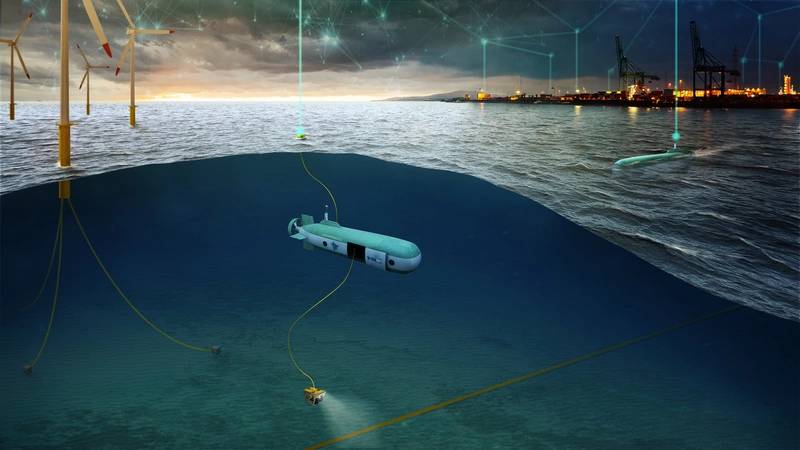 HonuWorx vehicle delivery submersible concept. Image from HonuWorx.
HonuWorx vehicle delivery submersible concept. Image from HonuWorx.
HonuWorx
Another idea, to deploy underwater vehicles using an underwater vehicle is being designed by Aberdeen-based HonuWorx.
“Our approach is effectively a delivery submersible for underwater vehicles – it transits to the worksite subsea and remains there whilst the worker vehicle executes the task,” says Wilson. “Then it heads back in. We envisage a future where our delivery subs ‘loiter’ in dense infrastructure areas, waiting for a call-off. The nice thing about our approach is we don’t care what kind of vehicle is inside – inspection, intervention, ROV, AUV. Tethered. Untethered. We’re just providing the launch craft and the means to communicate and control.”
The XLUUV would be a hybrid power system, probably with a diesel generator to support recharging at sea, but with fuel cells in the mix in future, says Wilson. For communications, the XLUUV would, a little like the Liberty system, have a surface buoy, that provides the surface communications gateway and also an absolute position reference from the surface.
Concepts
There is not a lack of concepts. A challenge for the industry – and resident vehicles – is finding a way for different vehicles to be able to operate, using the same infrastructure, so that they can scale and there’s not vendor lock-in.
There is work ongoing on standardised, vehicle agnostic subsea docking station, which includes a focus on communications, control and security architectures and standards that will need to support these operations, via the Subsea Wireless Group (SWIG).
These standards could also apply to other types of docking system, but what to do until there’s a way forward?




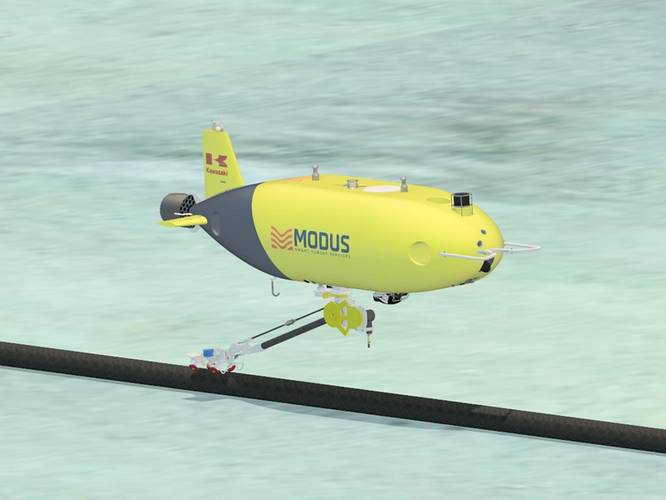
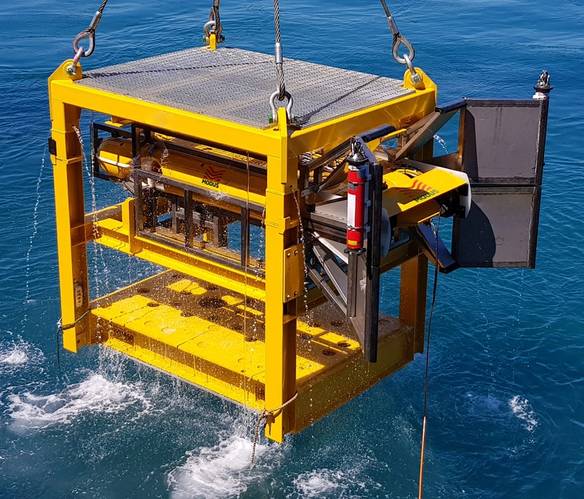
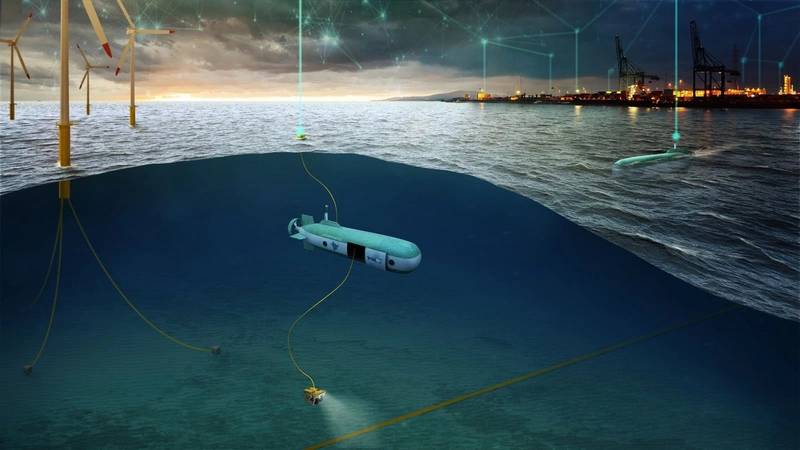
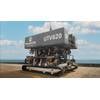
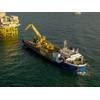

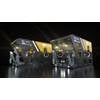
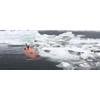
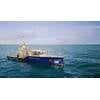







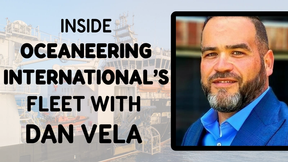
 August 2025
August 2025


